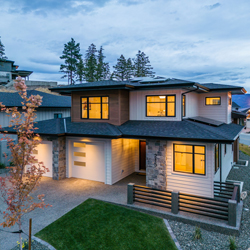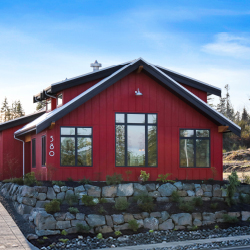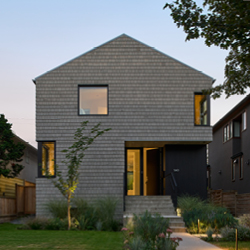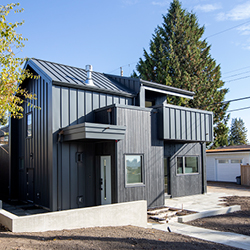Building new homes to higher steps of the BC Energy Step Code
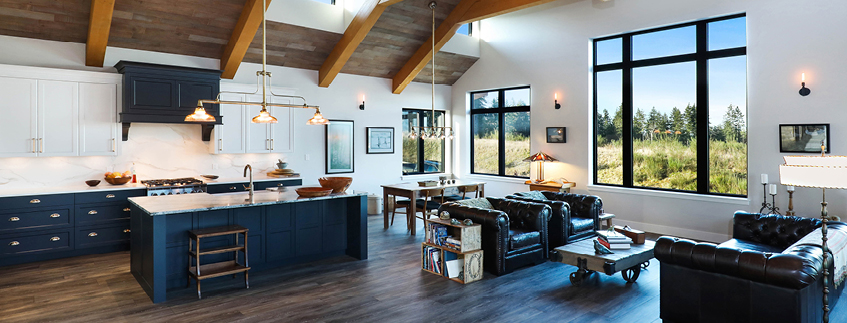
Photo credits: LSP Media
FortisBC is advancing energy efficiency in new construction by helping builders and developers achieve higher levels of the BC Energy Step Code with support through the New Home Program. Learn more about how the New Home Program has evolved over the years and read our case studies to see how builders from across B.C. are demonstrating that prioritizing energy efficiency in new home projects can help achieve higher levels of Step Code, regardless of the energy source, while providing homeowners with a comfortable home.
New Home Program: 13 plus years and going strong
We have offered the New Home Program since 2011 to support builders and developers that construct homes that are more energy efficient than minimum BC Building Code requirements.
In March 2018, the program was updated to address the BC Energy Step Code, an energy-efficiency performance standard designed to help the province meet its climate action targets.
In 2024, we revised the New Home Program to help builders and developers achieve higher levels of the step code. The program helps lower the costs of incorporating higher energy efficiency into new home construction and building to higher code standards.
We’ve got rebates
Get details on all the rebates and options available through the New Home Program.
Case studies: how builders are reaching higher steps
Regardless of the energy source used for heating and cooling, constructing a high-performance home starts with a building envelope that uses advanced airtightness layers and innovative insulation options.
These case studies help demonstrate how home builders across B.C. are achieving higher steps of the BC Energy Step Code, with help from energy advisors and our New Home Program, regardless of energy source.
|
|
Step 5, net-zero home, Kelowna An Integrated Design Process (IDP) was embraced to build this home, with stakeholders collaborating to streamline the design process, develop innovative approaches and reduce costs. The home integrates a dual-fuel HVAC system and uses Renewable Natural Gas1 (RNG) and solar PV generation to decarbonize the operation of the home and reduce the impact of electricity peak demand. |
|
Photo credits: LSP Media
|
Step 5, detached home, Campbell River The builder incorporated passive solar design, strategically placed windows and overhangs and made careful material selections. |
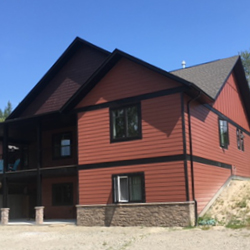 |
Step 5, detached home, Quesnel Located in one of B.C.’s colder regions, this home achieved Step 5 by investing in the building envelope using insulated concrete foundation forms, double-framed 2x4 walls and additional rigid insulation. |
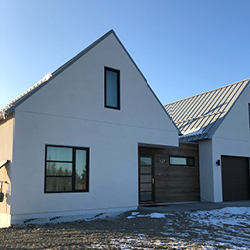 |
Step 5, detached home, Kimberley The builder/owner incorporated passive solar design, Scandinavian architecture that minimizes the surface area of exterior walls and double-framed 2x4 exterior walls with three layers of R14 insulation. |
|
|
Step 4, detached home, Vancouver Building science and meticulous pre-construction planning were applied to build this home. Early collaboration between the builder and the home’s architect helped incorporate design changes that facilitated comfort and energy efficiency without compromising aesthetics or floor space. This home was designated as an “Air Barrier Champion" which required maintaining the integrity of the thermal envelope throughout the construction process, while applying other innovative techniques. |
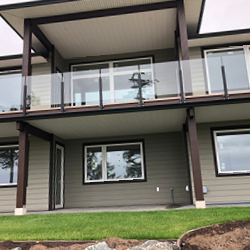 |
Step 4, detached home, Campbell River By working with an energy advisor, the builder achieved Step 4 with improved airtightness, insulated concrete forms, R22 batt insulation and a high-quality commercial-grade air barrier. |
|
Photo credits: Janis Nicolay, Pinecone Camp |
Step 3, laneway home, North Vancouver This laneway home achieved Step 3 despite the limitations of municipal bylaws and a smaller plot. The home incorporated strategic window placements and meticulously installed air barrier and spray foam insulation. A compact mechanical system was needed to maximize living space in this home. |
Renewable Natural Gas for new homes
Today, all gas customers have a portion of their gas designated as Renewable Natural Gas (RNG)1 through FortisBC’s designated RNG blend. Further, signing up for the voluntary RNG program is simple. Customers can designate five, 10, 25, 50 or 100 per cent of the gas they use as RNG.
Our team is here to help
For advice on the energy-efficiency options best suited for your project, or help with understanding the BC Energy Step Code, or completing your rebate application, contact an energy solutions manager (gas) or a program qualified energy advisor (electricity).
1Renewable Natural Gas (also called RNG or biomethane) is produced in a different manner than conventional natural gas. It is derived from biogas, which is produced from decomposing organic waste from landfills, agricultural waste and wastewater from treatment facilities. The biogas is captured and cleaned to create RNG. When RNG is added to North America’s natural gas system, it mixes with conventional natural gas. This means we’re unable to direct RNG to a specific customer. But the more RNG is added to the gas system, the less conventional natural gas is needed, thereby reducing the use of fossil fuels and overall greenhouse gas emissions.
